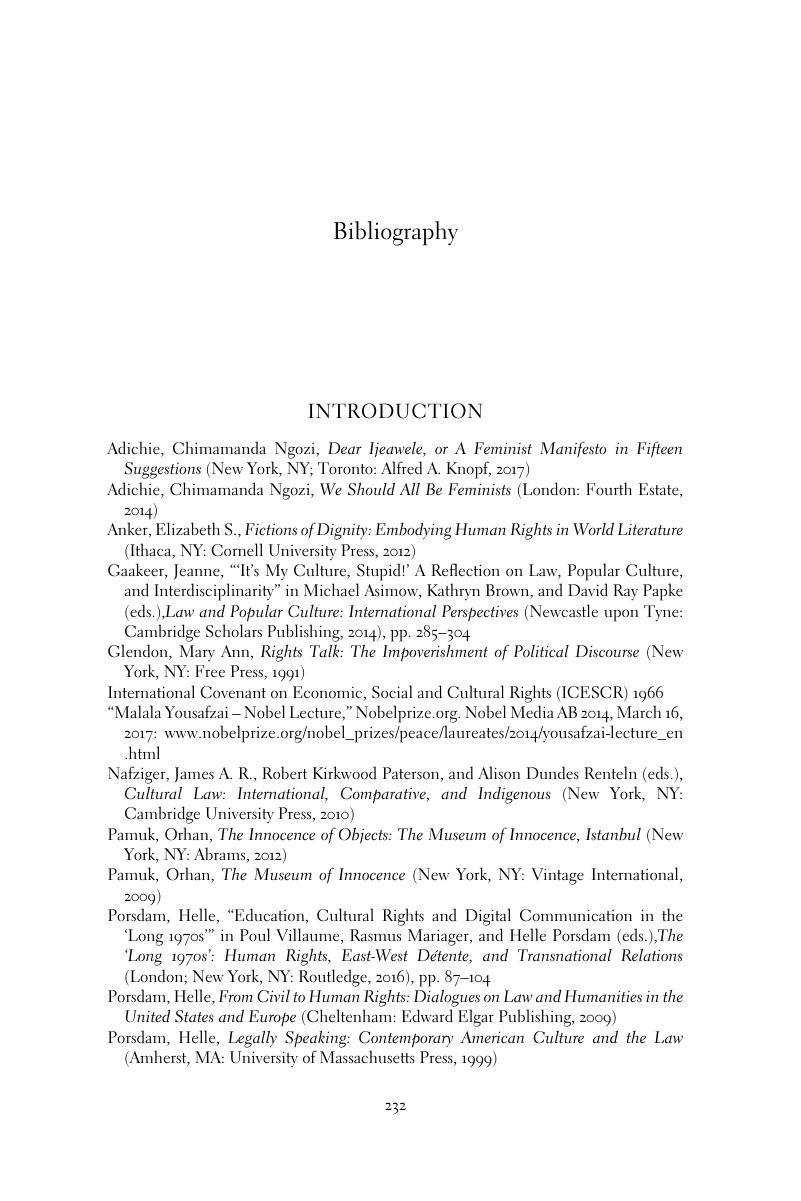Bibliography
Published online by Cambridge University Press: 04 April 2019
Summary

- Type
- Chapter
- Information
- The Transforming Power of Cultural RightsA Promising Law and Humanities Approach, pp. 232 - 252Publisher: Cambridge University PressPrint publication year: 2019



